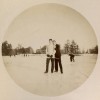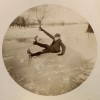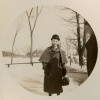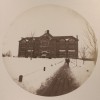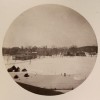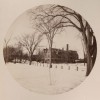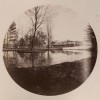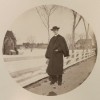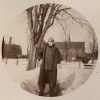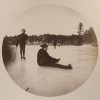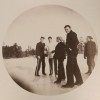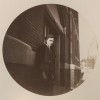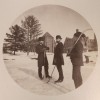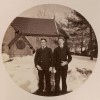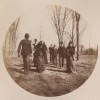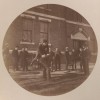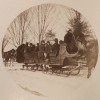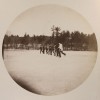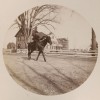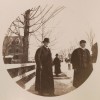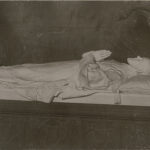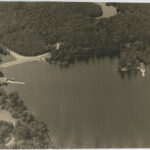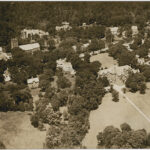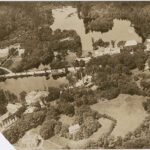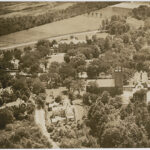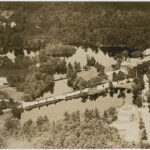The T. Mitchell Hastings Album of 1890
Introduction:
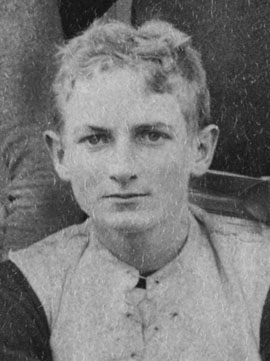
Theodore Mitchell Hastings was born in Philadelphia on July 16, 1876, the son of Robert E. Hastings and Emily Mitchell. He came to St. Paul’s School in 1890 for his Second Form year and graduated as a member of the Form of 1894. After St. Paul’s he attended Harvard, where he studied architecture, and continued his studies at the École des Beaux-Arts in France. He became an architect and worked as a partner in the firm of Brockie and Hastings in Philadelphia from 1903-1919, and then later with Soule, Murphy and Hastings in California. He eventually retired to his home in Contoocook, NH, not far from St. Paul’s School. He was an active member of the SPS Alumni community and his home in Contoocook was often the center of hospitality for his Form on reunion weekends.
A personal photo album was donated to the St. Paul’s School archives some years ago and is inscribed with the title “Views Taken at St. Paul’s School, Concord, N. H. 1890 by Theodore Mitchell Hastings”. The album contains 120 photographs mounted onto 15 album pages. In the winter of 1890, when these photographs were taken, T. Mitchell Hastings would have been 14 years old. Many of the photographs in the album were taken during the winter months and the Record of 1891 reports that the snowfall that year was heavy, with over 94 inches – enough snowfall for 101 continuous days of sleighing.
Hastings resided in the School, a large and imposing brick structure that was situated near the present day Schoolhouse. He was a Delphian and played cricket on the second 11 that year, and was also a member of the Racquet Court Club and the Choir, but is interestingly not listed among the members of the Camera Club.
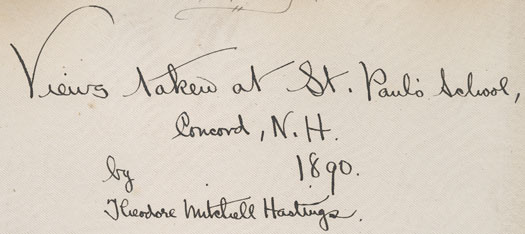
Based on the format of the photographs in his album it is possible to tell that the camera used to take these pictures was a Kodak No. 2 Box Camera, introduced in late 1889. These cameras measured four and a half by five inches and were nine inches long. They came loaded with enough film for up to 150 photographs, and produced round images that were three and a half inches in diameter. Once all the pictures were taken the entire camera would be shipped back to Kodak for processing, at which time the camera would be re-loaded with film. The photo album containing Hasting’s photographs was also manufactured by Kodak, and came with pre-printed board pages for mounting and describing the photographs. Hastings inscribed titles to the photographs, identifying most of the subjects, and in many places he added humorous descriptions and notes in the margins. The invention of these Kodak cameras provided the opportunity for taking photographs outside of the formal settings of the photographer’s studio, and Hastings’ photographs are among the earliest candid photos in the St. Paul’s School archives collection.
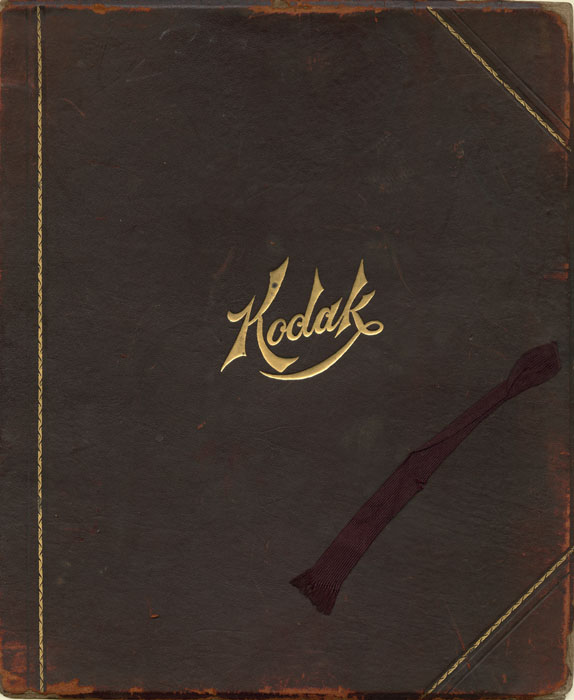
This album provides a unique view of student life at St. Paul’s School in 1890. The scenes captured by T. Mitchell Hastings are of his friends, family, and teachers, of buildings on the grounds, and of points of interest here in Concord and at his home in Philadelphia. Collectively they provide a depth of visual information about life at St. Paul’s than isn’t typically found in the pages of the written histories of the School. The result is a delightful collection of images that provides a very personal perspective of student life during the early years of St. Paul’s School.
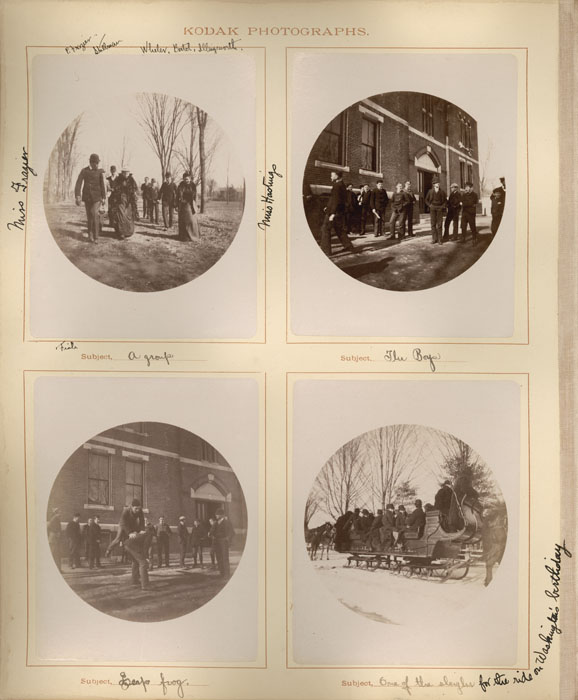
As part of the preservation process for this album each of the photographs has been digitized and cataloged and is now available online through the Ohrstrom Library Digital Archives. The images have been organized into an online exhibit as a feature to the complete collection. Additionally, the complete set of 120 images from this album have been gathered into a free downloadable eBook for viewing on your iPad, iPod Touch and iPhone using the iBook application.
Click HERE to view the entire collection of photographs from this album.
Click HERE to access an eBook version of the Hastings album and other OLDA eBooks.
Exhibit Quick Links:
(See full exhibit below)
Click on the thumbnails above or the titles below to access the individual catalog pages.
Exhibit Entries:
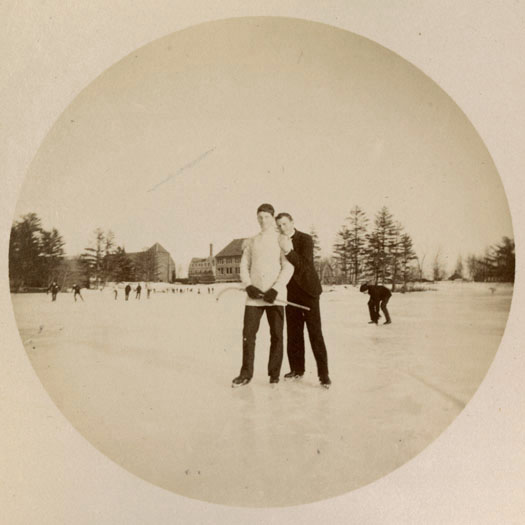
Shown in this photograph are Langdon Lea and Charles Williams Penrose, both from the Form of 1892. In the background is the Chapel of St. Peter and St. Paul (New Chapel), the Big Study, and the Big Study Annex. According to the Record for the 1890-91 school year both Lea and Penrose were Fourth Formers from Philadelphia, and resided in the School building. Active in sports, Lea was a Delphian first eleven football player and a Halcyon first crew in the number three position. He is listed as being seventeen years old, six feet and a quarter inch tall, and weighing in at 170 pounds. Penrose rowed for the Shattuck first crew, also in the number three position, and is listed as being eighteen years old, six feet and one half inch tall, and one hundred sixty-six pounds. Halcyon finished ahead of the Shattucks that season winning twelve out of nineteen races.
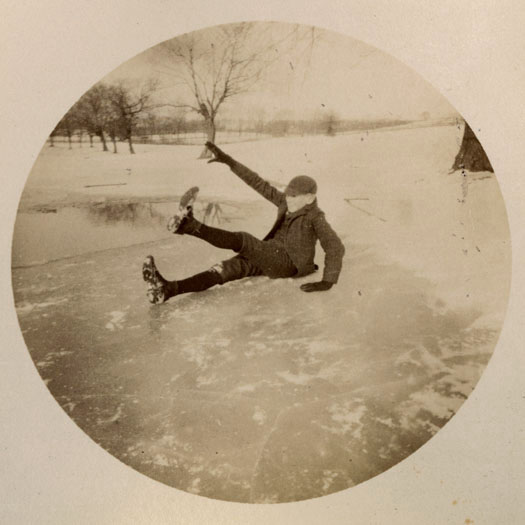
A Kodak No. 2 type photograph taken in 1890 by Theodore Mitchell Hastings, Form of 1894, while a student at St. Paul’s School. This photograph features an unidentified boy shown slipping on the ice. The caption simply reads “Oh!!!” but in the margin “Listen to my tail of woe! (popular song)” was punnily added.
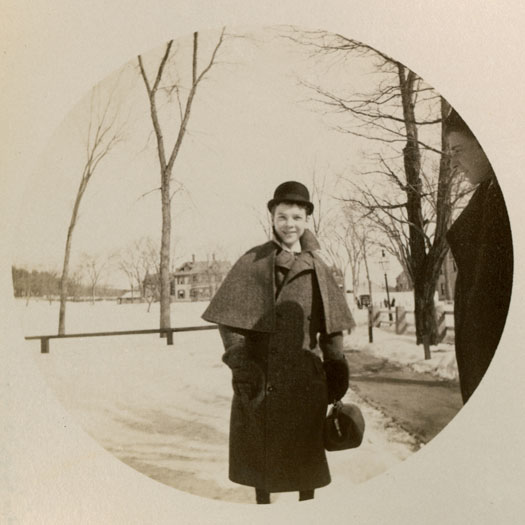
The student in this photograph is identified as “Billy Fisher” – William Alexander Fisher, Jr., Form of 1892. The Record for 1890-91 lists him as a Fourth Former from Baltimore, MD, and a resident of the School building. The Record also notes that he was the Halcyon second crew coxswain, weighing in at a mere seventy-five pounds. The Halcyons won nine out of their sixteen races against the Shattucks that season.
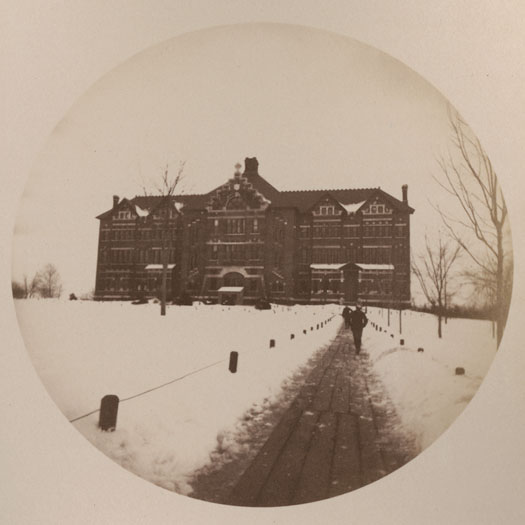
This photograph features the original School building, completed in 1880 and torn down in 1929. The current Schoolhouse is built on about the same location. At the time this photograph was taken this building was a dorm for Third and Fourth Formers. The photographer, Theodore Mitchell Hastings, Form of 1894, resided here during the school year.
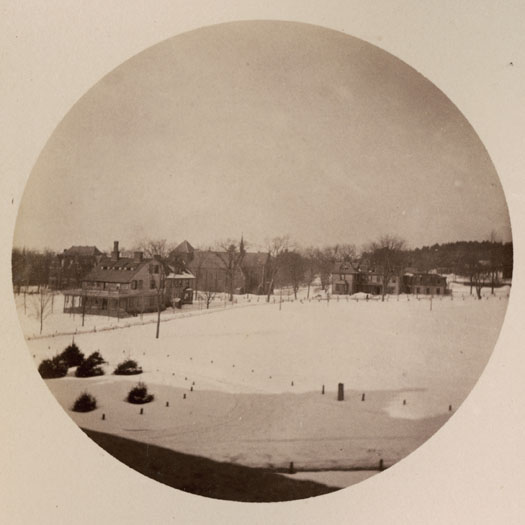
This photograph was taken from one of the upper floors of the School building, providing an excellent view of the grounds. The buildings are from left to right: The Big Study, the Infirmary, the New Chapel (prior to completion of the tower), and the Old Lower School.
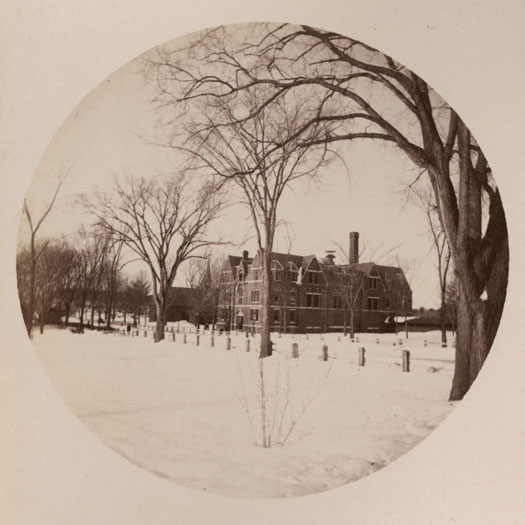
In this photograph is the Big Study, originally located between the Old and New Chapels, across from the Rectory. The Old Chapel can be seen behind and to the left of the Big Study. The Big Study was built in 1872-73, was enlarged in 1888 and remodeled in 1937, and then burned down in a spectacular fire on the bitterly cold night of January 21, 1961. This photo also shows some of the many elm trees that were planted along Rectory Road before they were destroyed by Dutch elm disease.
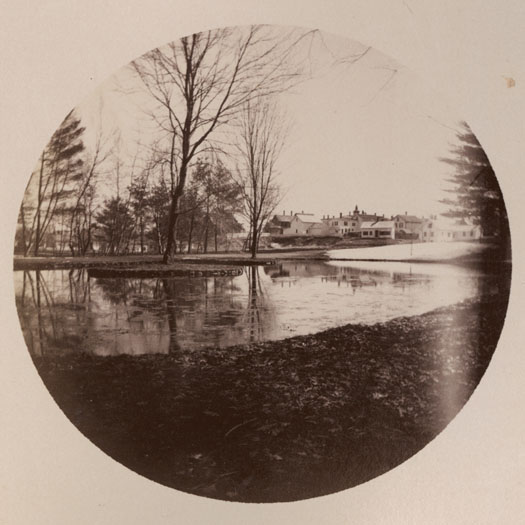
This photograph was taken at White Park (also known locally as White’s Park) in Concord, NH. White Park is the oldest municipal park in New Hampshire, established in 1884, and is located approximately two miles from the center of the St. Paul’s School grounds.
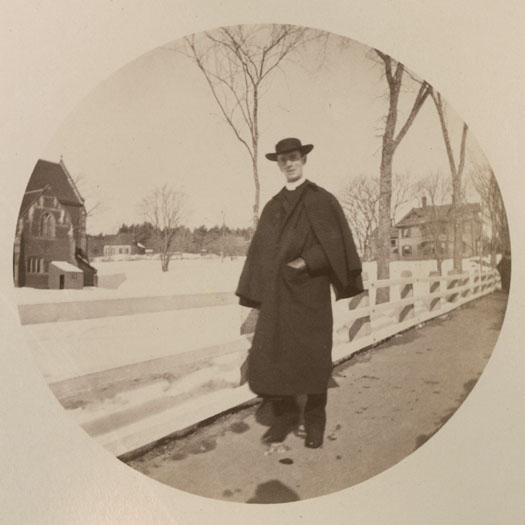
In this photograph is the Rev. Charles Wheeler Coit, Form of 1878. The Rev. Coit was the oldest son of the first Rector, Henry Augustus Coit, and served as a member of the faculty from 1888-1898. On the left side of the photograph the corner of the New Chapel can be seen, and on the right is the Lower school.
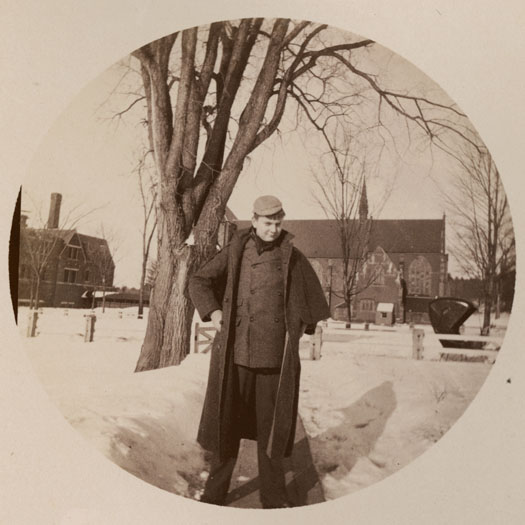
The boy in this photograph is identified as “Archie McCrea” and is Archibald Montgomery McCrea, Form of 1894. The New Chapel is behind him, and on the left of the photograph is the Big Study.
Archie McCrea was a Delphian, and during the 1890-91 school year played on the club’s third football eleven team. By the Fall of 1892 he had worked his way up to the Delphian first eleven as a rusher, and went on to Yale to play football. He was from Pittsburgh, PA, and his father was the president of the Pennsylvania Railroad. He went on to become the president of the Union Spring and Manufacturing Company of New York and Pittsburgh.
In 1911, McCrea made the newspapers when his wife, Mary Corling Johnston Dunlop, sacrificed her two million dollar inheritance from her previous marriage – a sum in excess of forty six million of today’s dollars – in order to marry him. An article in the Pittsburgh Press of October 22, 1911 states:
“In love as she really was, and young Mr. McCrea kept begging her to name the day. On one hand was the millions left to her by her first husband . . . on the other was the young man who was desperately in love with her and cared nothing for her money.”
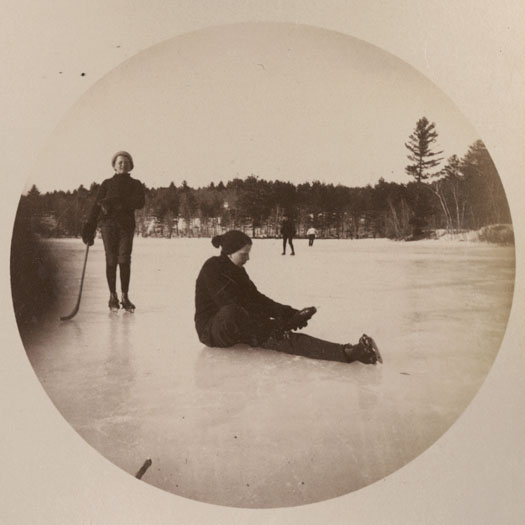
A Kodak No. 2 type photograph taken in 1890 by Theodore Mitchell Hastings, Form of 1894, while a student at St. Paul’s School. This photograph shows unidentified boys playing hockey on Lower School Pond. One boy appears to be adjusting his ice skate.
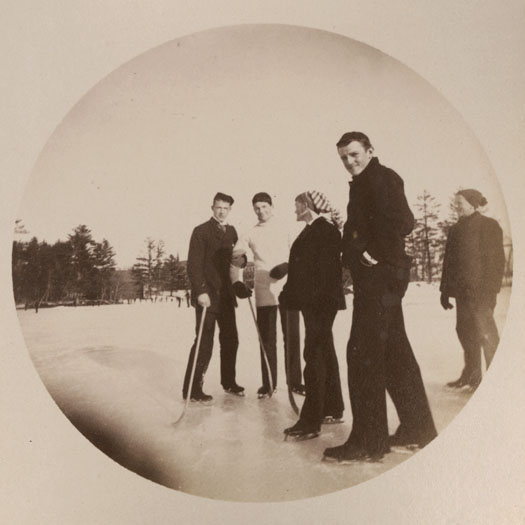
This photograph shows a group of students on the ice of Lower School Pond taking a break from playing hockey. The boy on the left is identified as “Lownds” and is either Richard Tasker Lowndes, II, or Lloyd Lowndes – twin brothers from the Form of 1891. Next to him in the white sweater is “L. Lea” – Langdon Lea, Form of 1892. Next to him in the striped cap is “T. Cadwalader” – Thomas Cadwalader, Form of 1892. Next to him is “Penrose” – Charles Williams Penrose, Form of 1892. The boy on the far right is not identified, but appears from other identified photographs to be William Baker Whelen, Form of 1895.
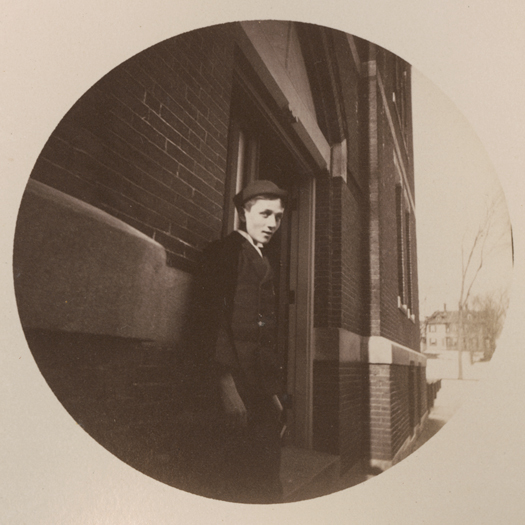
The student in the photograph is identified as “Plumber” and is Samuel Plumer, Jr., Form of 1893. He is shown standing outside the front entrance to the Big Study, and in the distance the Lower School can be seen.
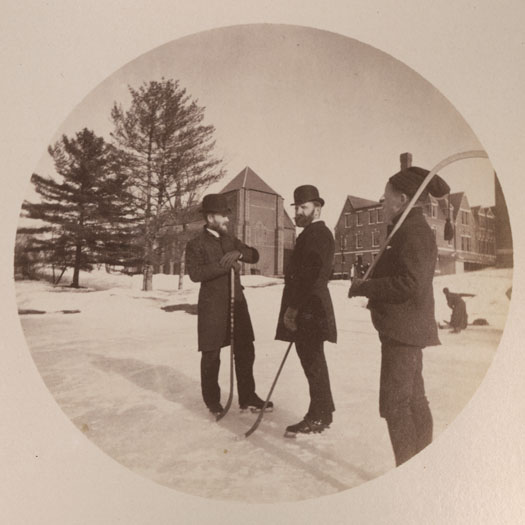
Identified on the left in this photograph as “Mr Conover” is the Rev. James Potter Conover, Form of 1876 and faculty member from 1882-1915. Identified on the right is “Lay” – the Rev. George William Lay, Form of 1878 and member of the faculty from 1888-1907. The buildings behind them are from left to right: the New Chapel, prior to the completion of the tower, and the Big Study.
Arthur Stanwood Pier, in his book, St. Paul’s School 1855-1934, described Mr. Lay this way:
The Rev. George W. Lay had a hearty and rugged personality. Solidly and strongly built, with a curly black beard and deep bass voice, he commanded from a new boy an exceptional degree of deference. Himself a graduate of the school, he believed in enforcing the rules thoroughly and was regarded as a somewhat harsh disciplinarian. But his fairness was never called in question; he displayed no favoritism; and returning alumni, even those on whom in their school days he had borne down severely on account of their misdemeanors, received no more cordial welcome from any master than from him.
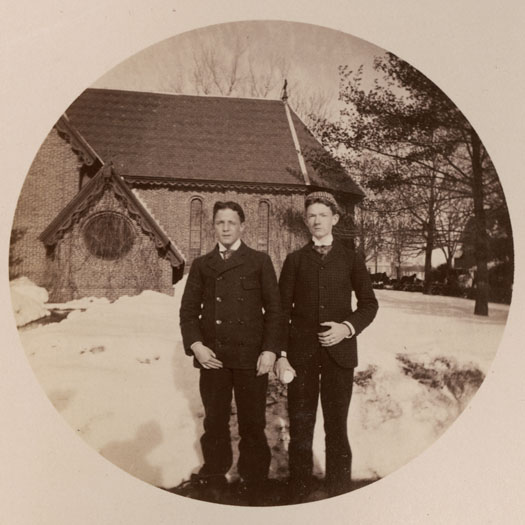
The two students in the photograph are identified as “Richards & Cox” and are J. DeForest Richards, Form of 1892, on the left and on the right, Archibald Cox, also from the Form of 1892. Behind them is the Old Chapel.
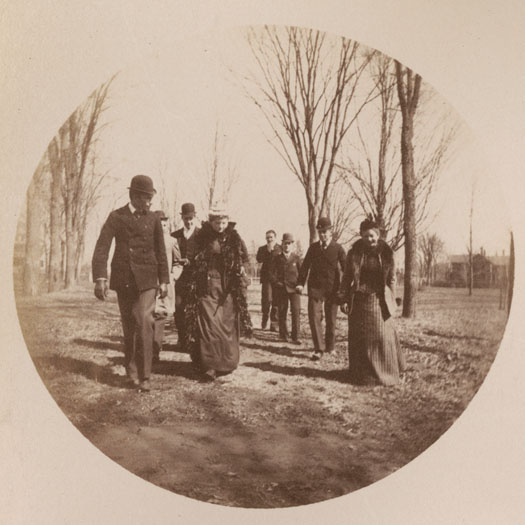
This photograph features a group of people walking along a path or roadway. The young woman on the right is identified at “Miss Hastings” and is most likely one of the photographer’s older sisters: Florence or Mabel Hastings. The young woman on the left is identified as “Miss Frazier”. Other names written in the margin identify from left to right: “Fish” – Hamilton Fish, III, Form of 1890; “P. Frazier” – Persifor Frazer, Jr., Form of 1892; “Stillman” – Philip Tracy Stillman, Form of 1890; “Wheler” – unable to clearly identify; “Bartol” – Henry George Bartol, Form of 1894; “Illingsworth” – Clarence Illingworth, Form of 1890.
Hamilton Fish III, shown on the far left of the photograph, was a member of Theodore Roosevelt’s Rough Riders after leaving St. Paul’s School, and was the first American soldier killed in action during the Spanish-American War in 1898.
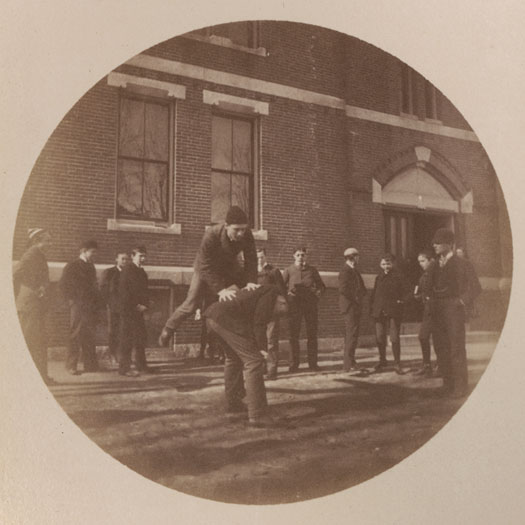
This photograph shows an unidentified group of students gathered outside the main entrance to the Big Study engaging in a game of leap frog.
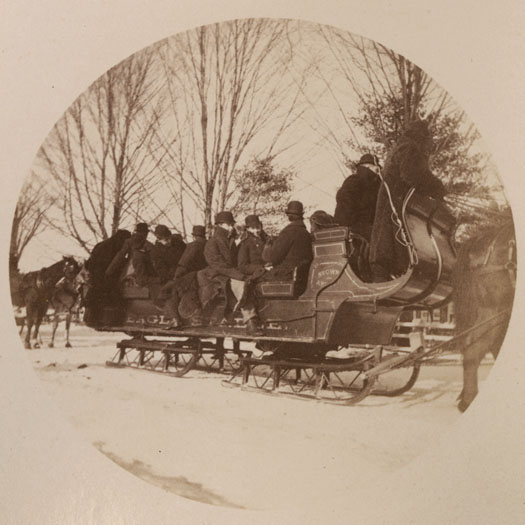
This photograph shows a sleigh filled with students with the note: “One of the sleighs for the ride on Washington’s birthday.” The March 18, 1890 edition of the Horae Scholasticae has this description of the day:
Saturday, February the twenty-second, was cold and clear, and the sleighing, about which there had been no little doubt, was, thanks to the recent fall of snow, quite good.
As soon as Chapel was over, the large sleighs and cutters, which were to carry a large party to Shaker Village, drew up in front of the Study, and about one hundred and twenty-five fellows took their places and set out on their long ride. They arrived at Canterbury about noon, and, after buying the usual amount of candy, seeing the barns, stock, and other objects of interest, had an excellent dinner, and then started for Penacook to attend the fair given by Mr. Valpey’s parish.
This sleigh has the words “Eagle Stable” and “Brown and Abbott” painted on the side. This photograph was taken on February 22, 1890.
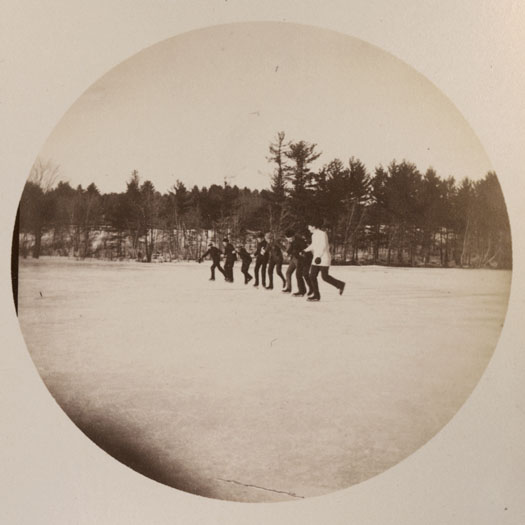
This photograph shows a group of eight students playing snap the whip on the ice of Lower School Pond.
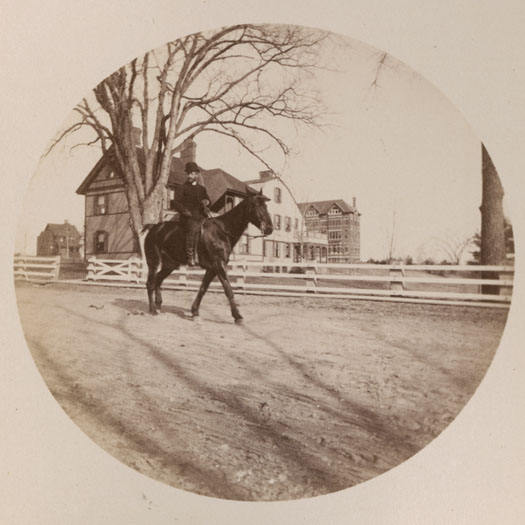
In this photograph a man identified as “Mr Conover” is shown riding a horse along Rectory Road. He is the Rev. James Potter Conover, Form of 1876 and faculty member from 1882-1915. Behind him is the infirmary, and behind the infirmary the School can be seen.
Arthur Stanwood Pier, in his book, St. Paul’s School 1855-1934, described him this way:
The Rev. James P. Conover , a graduate of the school, was of medium height, compact yet lithe and wiry, an athlete of great strength, quickness, and versatility. In his early years as a master he could outjump and outrun any boy in the school.
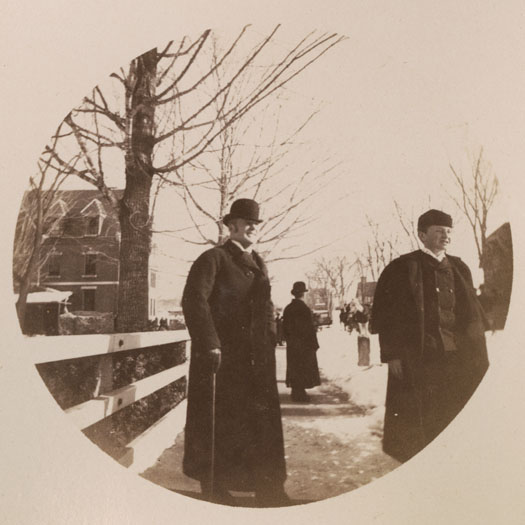
Identified in this photograph is Dr. James Milnor Coit, Form of 1860 and faculty member from 1877-1906. Dr. Coit was the younger brother of the First and Second Rectors, Henry Augustus Coit and Joseph Howland Coit.
Arthur Stanwood Pier, in his book, St. Paul’s School 1855-1934, described Dr. Coit this way:
Dr. Milnor Coit was a portly gentleman, bald, round-faced, smooth-shaven except for short brown side-whiskers, bland of manner, with a good sense of humor and a hard blue eye. “Bother Mil,” as he was generally called, was as worldly in his outlook as his two older brothers were unworldly. He drove in smart equipages behind fast horses; in winter, speeding along snowy roads in his gaily painted sleigh, wrapped in furs, he presented the appearance of a Russian Grand Duke.





